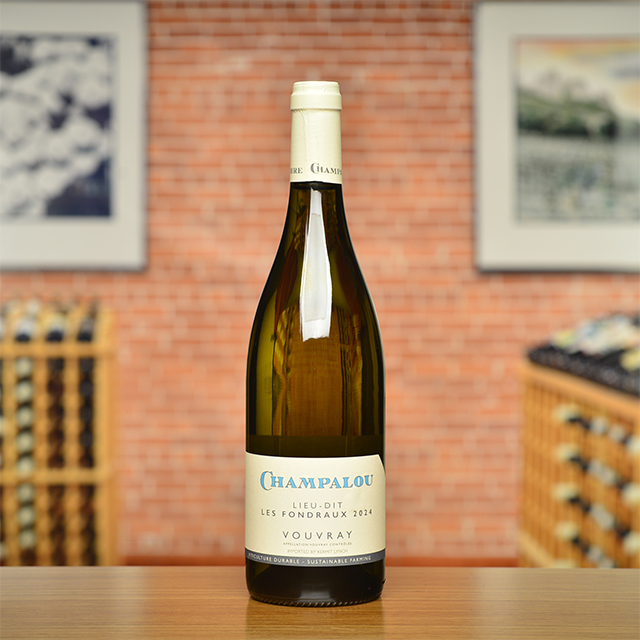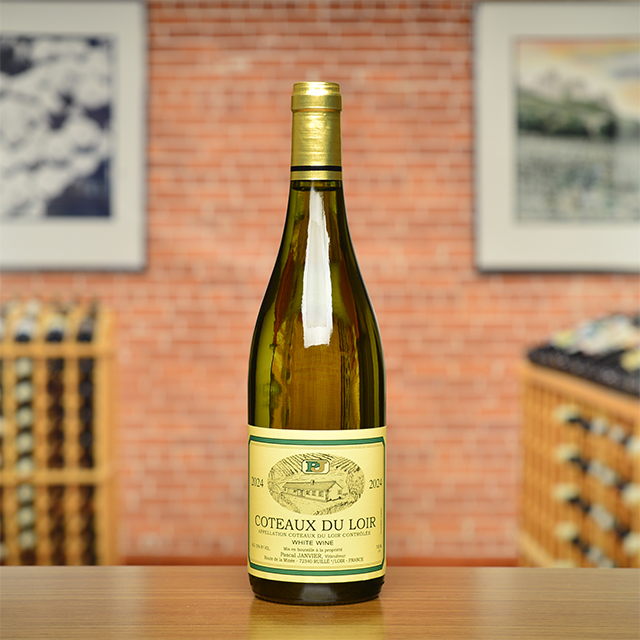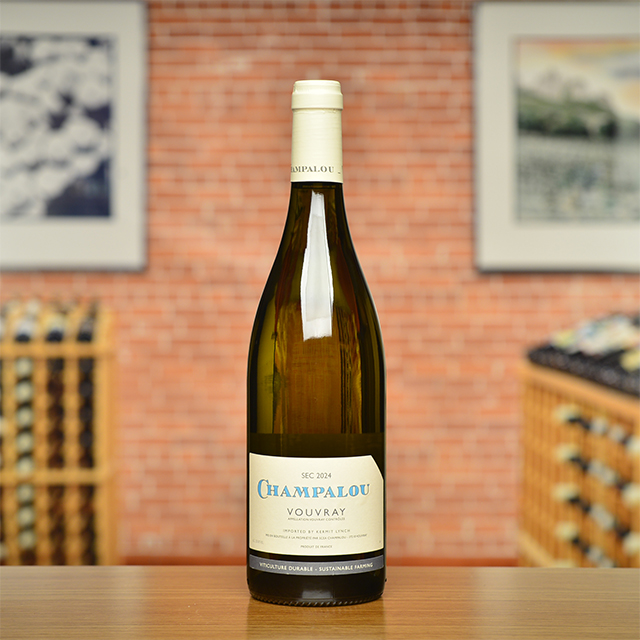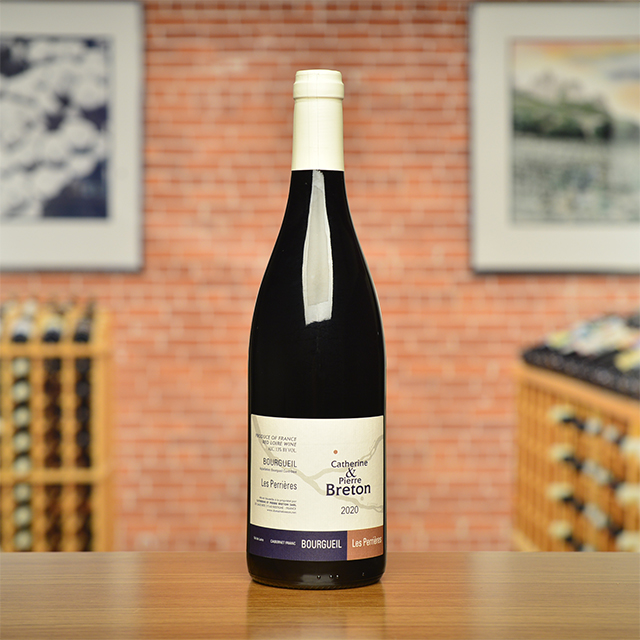Notify me
2015 Vouvray “La Moelleuse”
Champalou
This is the Champalous’ late-harvest wine, gently sweet yet retaining the mouthwatering acidity that Chenin from the great sites of the Loire can provide. Moelleux, or the feminine moelleuse, is a French word describing texture that can also be used to describe food. “Smooth” and “tender” are both translations.
Making a moelleux requires harvesting later, thus achieving higher natural sugar, which provides glycerin in the wine. The trick is to perfect the balance between the decadent textural component and a certain freshness, in order to leave the palate invigorated. The Champalous’ Moelleuse achieves just that and is one of the best ways I can think of to finish an evening at table.
—Dixon Brooke
| Wine Type: | dessert |
| Vintage: | 2015 |
| Bottle Size: | 500mL |
| Blend: | Chenin Blanc |
| Appellation: | Vouvray |
| Country: | France |
| Region: | Loire |
| Producer: | Champalou |
| Winemaker: | Catherine & Didier Champalou |
| Vineyard: | 20 years average, 3.5 ha |
| Soil: | Clay, Limestone |
| Farming: | Sustainable |
| Alcohol: | 11% |
More from this Producer or Region

2024 Saumur Blanc “L’Insolite”
France | Loire
Made from nearly hundred-year-old vines, this a great initiation into the world of Thierry’s white wines.

2024 Vouvray “Les Fondraux”
France | Loire
The contrast of ripe, succulent Chenin Blanc fruit with a spike of flinty minerality is like licking honey off an arrowhead.

2024 Menetou-Salon Blanc “Le Prieuré”
France | Loire
From a small but mighty appellation boasting an impressive soil loaded with fossilized oyster shells. Peachy, finely textured, and pleasantly verdant.

2024 Coteaux du Loir Blanc
France | Loire
Exotically perfumed with hints of guava, musk, and clove, it finishes dry and quite flinty.

2024 Vouvray
France | Loire
Gentle and refreshing on the palate, it boasts a delightful balance of stony minerality with luscious, almost honeyed fruit and flowery notes.

2024 Sancerre Rosé
France | Loire
Sancerre Rosé is made from Pinot Noir grown in Kimmeridgian limestone soil, and the Neveu family’s interpretation is fine, floral, crisp, and bone-dry.

2022 Quincy “Château de Quincy”
France | Loire
Textured, lush, full of aromatic gooseberry and passionfruit—all supported by spiny minerality.

2020 Bourgueil “Les Perrières”
France | Loire
The family’s grandest wine, a brooding elixir of satiny fruit, cedar, and graphite.

Vouvray Brut
France | Loire
Made from Chenin Blanc in the Champagne method, this cuvée is the quintessential apéritif sparkling wine, with notes of apple and pear and a fine bead.

2024 Savennières “Cuvée Spéciale”
France | Loire
Powerful, cellar-worthy dry Chenin aged in chestnut, oak, and acacia.
About The Producer
Champalou
About The Region
Loire

The defining feature of the Loire Valley, not surprisingly, is the Loire River. As the longest river in France, spanning more than 600 miles, this river connects seemingly disparate wine regions. Why else would Sancerre, with its Kimmeridgian limestone terroir be connected to Muscadet, an appellation that is 250 miles away?
Secondary in relevance to the historical, climatic, environmental, and cultural importance of the river are the wines and châteaux of the Jardin de la France. The kings and nobility of France built many hundreds of châteaux in the Loire but wine preceded the arrival of the noblesse and has since out-lived them as well.
Diversity abounds in the Loire. The aforementioned Kimmeridgian limestone of Sancerre is also found in Chablis. Chinon, Bourgueil, and Saumur boast the presence of tuffeau, a type of limestone unique to the Loire that has a yellowish tinge and a chalky texture. Savennières has schist, while Muscadet has volcanic, granite, and serpentinite based soils. In addition to geologic diversity, many, grape varieties are grown there too: Cabernet Franc, Chenin Blanc, Sauvignon Blanc, and Melon de Bourgogne are most prevalent, but (to name a few) Pinot Gris, Grolleau, Pinot Noir, Pineau d’Aunis, and Folle Blanche are also planted. These myriad of viticultural influences leads to the high quality production of every type of wine: red, white, rosé, sparkling, and dessert.
Like the Rhône and Provence, some of Kermit’s first imports came from the Loire, most notably the wines of Charles Joguet and Château d’Epiré—two producers who are featured in Kermit’s book Adventures on the Wine Route and with whom we still work today.
More from Loire or France
2020 Bourgueil “Les Perrières”
Catherine & Pierre Breton France | Loire
2024 Chinon “Les Granges”
Bernard Baudry France | Loire
2020 Saumur-Champigny “Franc de Pied”
Thierry Germain France | Loire
2021 Saumur Champigny “La Marginale”
Thierry Germain France | Loire
2021 Chinon “La Croix Boissée”
Bernard Baudry France | Loire
2022 Vin de France Rouge “Le Martray”
Grange Saint Sauveur France | Loire
2022 Chinon Blanc
Bernard Baudry France | Loire
2022 Saumur Champigny “Terres Chaudes”
Thierry Germain France | Loire
2024 Savennières “Cuvée Spéciale”
Château d’Epiré France | Loire
2021 Vin de France Rosé Grolleau/Cabernet Franc “Les Arceaux”
Grange Saint-Sauveur France | Loire
2023 Reuilly Pinot Noir
Domaine de Reuilly France | Loire
2022 Jasnières “Dyane”
Christine de Mianville France | Loire
2020 Bourgueil “Les Perrières”
Catherine & Pierre Breton France | Loire
2024 Chinon “Les Granges”
Bernard Baudry France | Loire
2020 Saumur-Champigny “Franc de Pied”
Thierry Germain France | Loire
2021 Saumur Champigny “La Marginale”
Thierry Germain France | Loire
2021 Chinon “La Croix Boissée”
Bernard Baudry France | Loire
2022 Vin de France Rouge “Le Martray”
Grange Saint Sauveur France | Loire
2022 Chinon Blanc
Bernard Baudry France | Loire
2022 Saumur Champigny “Terres Chaudes”
Thierry Germain France | Loire
2024 Savennières “Cuvée Spéciale”
Château d’Epiré France | Loire
2021 Vin de France Rosé Grolleau/Cabernet Franc “Les Arceaux”
Grange Saint-Sauveur France | Loire
2023 Reuilly Pinot Noir
Domaine de Reuilly France | Loire
2022 Jasnières “Dyane”
Christine de Mianville France | Loire
Kermit once said...

Kermit once said...
I want you to realize once and for all: Even the winemaker does not know what aging is going to do to a new vintage; Robert Parker does not know; I do not know. We all make educated (hopefully) guesses about what the future will bring, but guesses they are. And one of the pleasures of a wine cellar is the opportunity it provides for you to witness the evolution of your various selections. Living wines have ups and downs just as people do, periods of glory and dog days, too. If wine did not remind me of real life, I would not care about it so much.
Inspiring Thirst, page 171
















